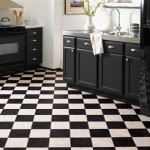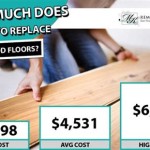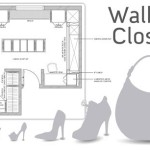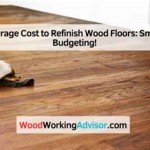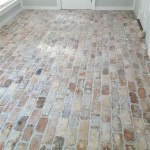Understanding Non-Slip Solutions for Shower Floors
Shower floors, by their very nature, present a slip-and-fall hazard. The combination of water, soap, and smooth surfaces creates a slick environment that can lead to accidents, ranging from minor bruises to serious injuries. Addressing this risk is paramount, particularly for individuals with mobility issues, seniors, or families with young children. Various non-slip solutions are available to enhance the safety of shower floors, each with its own advantages and disadvantages regarding effectiveness, durability, aesthetics, and ease of installation.
The selection of an appropriate non-slip solution requires careful consideration of several factors. These include the type of shower floor material (e.g., tile, acrylic, stone), the level of slip resistance desired, budget constraints, and personal preferences regarding appearance. Some solutions are relatively inexpensive and easy to implement, while others require professional installation and a significant investment. This article provides an overview of common non-slip options for shower floors, outlining their key features and benefits to aid in making an informed decision.
Understanding the Mechanics of Slipping and the Need for Non-Slip Solutions
Slipping occurs when there is insufficient friction between the foot and the floor surface. Friction is the force that resists motion between two surfaces in contact. When a shower floor is wet and soapy, the water and soap act as lubricants, reducing the friction between the foot and the floor. This reduction in friction makes it easier for the foot to slide, leading to a fall.
Non-slip solutions work by increasing the coefficient of friction (COF) between the foot and the floor surface. The COF is a measure of the resistance to sliding; a higher COF indicates a greater resistance to slipping. Various methods can be employed to increase the COF, including adding texture to the floor surface, applying a non-slip coating, or using specialized mats or treads.
The American Society for Testing and Materials (ASTM) provides standards for measuring the COF of flooring materials. These standards are used to assess the slip resistance of different non-slip solutions. Understanding the COF ratings of different options can help in selecting a solution that provides an adequate level of slip resistance for the specific needs of the user.
Popular Non-Slip Options for Shower Floors
Several non-slip options are available for shower floors, each catering to different needs and preferences. These options range from simple, temporary solutions to more permanent and complex installations.
1. Non-Slip Shower Mats: Shower mats are a readily available and cost-effective solution for adding slip resistance to shower floors. These mats typically feature a textured surface and suction cups on the underside to grip the floor. They are easy to install and remove, making them a convenient option for renters or those who prefer a temporary solution. However, shower mats require regular cleaning to prevent the buildup of mildew and bacteria. They may also not be suitable for individuals with mobility issues, as the edges of the mat can present a tripping hazard.
Shower mats come in a variety of materials, including rubber, vinyl, and plastic. Rubber mats tend to be more durable and provide better slip resistance than vinyl or plastic mats. However, rubber mats can sometimes stain or discolor the shower floor. Vinyl and plastic mats are generally less expensive and easier to clean, but they may not be as durable or slip-resistant.
2. Non-Slip Shower Treads: Shower treads are small, adhesive-backed strips that are applied to the shower floor to provide localized areas of slip resistance. They are typically made of rubber, vinyl, or textured plastic. Shower treads are a discreet and relatively inexpensive option for improving traction in the shower. They are particularly useful for targeting specific areas that are prone to slipping, such as the area near the shower head or the entrance to the shower.
Similar to shower mats, shower treads require regular cleaning to prevent the buildup of mildew and bacteria. They also need to be replaced periodically, as the adhesive can weaken over time. The effectiveness of shower treads depends on the quality of the adhesive and the surface to which they are applied. Properly preparing the shower floor surface before applying the treads is crucial for ensuring a secure and long-lasting bond.
3. Non-Slip Coatings: Non-slip coatings are liquid products that are applied to the shower floor to create a textured surface that enhances slip resistance. These coatings can be applied to a variety of shower floor materials, including tile, acrylic, and stone. Non-slip coatings typically consist of a polymer resin that is mixed with abrasive particles, such as silica or aluminum oxide. The abrasive particles create a textured surface that provides increased traction.
Non-slip coatings offer a more permanent solution than shower mats or treads. They can be applied by a professional or as a DIY project. Professional application typically yields better results, as it ensures proper surface preparation and even application of the coating. DIY application requires careful attention to detail and adherence to the manufacturer's instructions. The durability of non-slip coatings varies depending on the product and the level of foot traffic. Some coatings may require reapplication after several years of use.
4. Etching or Texturing Tile: Etching or texturing the surface of the tile can permanently increase its slip resistance. This process involves using specialized chemicals or tools to create a rougher surface on the tile. Etching is typically performed by a professional, as it requires specialized knowledge and equipment. The process can be used on most types of tile, but it is particularly effective on ceramic and porcelain tile.
Etching can alter the appearance of the tile, so it is important to choose an etching method that achieves the desired level of slip resistance without compromising the aesthetics of the shower. Some etching methods create a subtle texture that is barely visible, while others create a more pronounced texture. The cost of etching varies depending on the size of the shower and the type of tile. While effective, this method alters the existing tile permanently and is not reversible.
5. Replacing Existing Tile with Non-Slip Tile: Replacing existing tile with tile specifically designed for slip resistance is a permanent solution that provides long-term safety. Non-slip tiles are manufactured with a textured surface or a special coating that increases the COF. These tiles are available in a variety of styles and colors to complement the overall design of the bathroom.
Replacing tile is a more expensive and time-consuming option than other non-slip solutions. It typically requires professional installation and may involve demolition of the existing shower. However, the benefits of replacing tile with non-slip tile include improved safety, enhanced aesthetics, and increased home value. When selecting non-slip tile, it is important to consider the COF rating and the intended use of the shower. Tiles with a higher COF rating are generally more slip-resistant.
Factors to Consider When Choosing a Non-Slip Solution
Selecting the appropriate non-slip solution for a shower floor depends on a variety of factors, including the existing floor material, budget, desired level of slip resistance, and personal preferences. A careful assessment of these factors is crucial for making an informed decision that meets the specific needs of the user.
1. Existing Floor Material: The type of material used for the shower floor will influence the choice of non-slip solution. Some solutions, such as non-slip coatings, are compatible with a wide range of materials, while others, such as etching, are best suited for specific types of tile. It is important to ensure that the chosen solution is compatible with the existing floor material to avoid damage or ineffective results.
2. Budget: The cost of non-slip solutions can vary significantly, from inexpensive shower mats to more costly tile replacement. It is important to establish a budget and consider the long-term costs of each option, including maintenance and replacement. While inexpensive solutions may offer immediate cost savings, they may require more frequent replacement or maintenance, ultimately costing more in the long run.
3. Desired Level of Slip Resistance: The level of slip resistance required depends on the needs of the user. Individuals with mobility issues or seniors may require a higher level of slip resistance than younger, more agile individuals. Consider the COF rating of different solutions and choose one that provides adequate slip resistance for the intended use. Consult with a healthcare professional or occupational therapist for guidance on selecting the appropriate level of slip resistance.
4. Aesthetics: While safety is the primary concern, it is also important to consider the aesthetics of the non-slip solution. Some solutions, such as shower mats, can detract from the overall appearance of the bathroom. Other solutions, such as non-slip coatings and tile replacement, can be chosen to complement the existing décor. Select a solution that provides the desired level of safety without compromising the aesthetics of the space.
5. Ease of Installation: The ease of installation varies depending on the non-slip solution. Some solutions, such as shower mats and treads, are easy to install and require no special tools or skills. Other solutions, such as non-slip coatings and tile replacement, may require professional installation. Consider the level of DIY expertise and the time commitment involved in each option when making a decision.
6. Maintenance: All non-slip solutions require some level of maintenance to keep them clean and effective. Shower mats and treads require regular cleaning to prevent mildew and bacteria buildup. Non-slip coatings may require periodic reapplication. Consider the maintenance requirements of each solution and choose one that is easy to maintain and that fits into the regular cleaning routine.

Best Shower Floor Tiles Non Slip Ideas 2025 Updated Country Floors

Best Shower Floor Tiles Non Slip Ideas 2025 Updated Country Floors

How To Make A Tiled Shower Floor Less Slippery

Pvc Non Slip Square Shower Mat 21 X Inches Floor For Bathroom Textured Surface C01 Dark Grey X21

Non Slip Shower Tub Floor Bubble Mat Bathroom Safety Rubber Suction Cup Grip New Ebay

Best Shower Floor Tiles Non Slip Ideas 2025 Updated Country Floors

Non Slip Bathroom Mat Tpe Composite Rubber Bath Solid Color Home Shower Children S Toilet Washroom Anti Fall Rug

Bath Tub Shower Mat Non Slip 16 X 39 Extra Long Bathtub Mats Suction Cups Dra Ebay

Stop The Slip Shower Mat White Size 24 Inch X

Non Slip Shower Floor Coating No Bathtub Treatment
